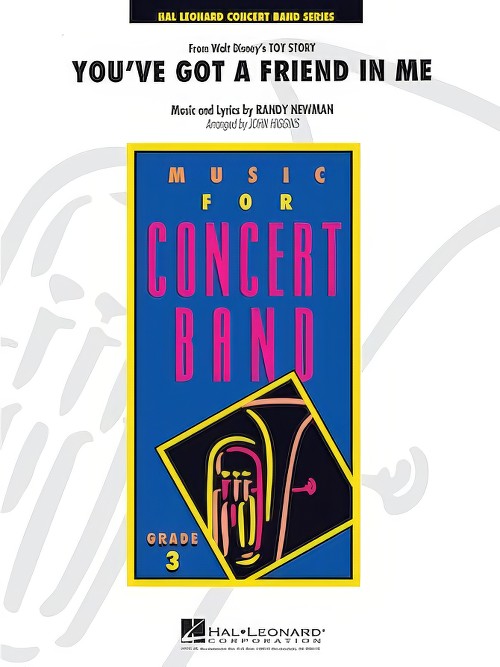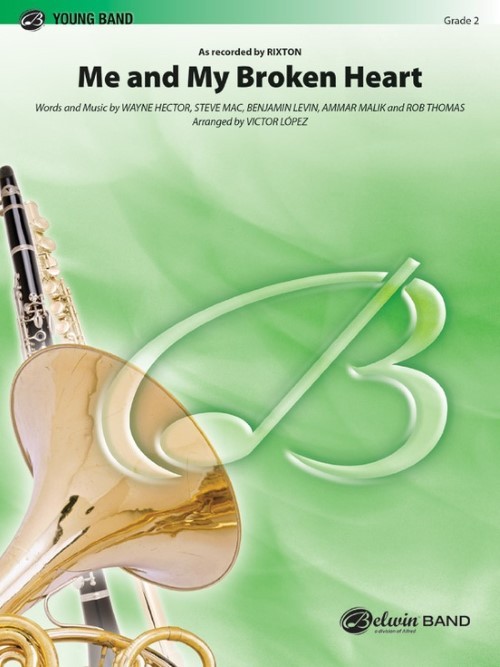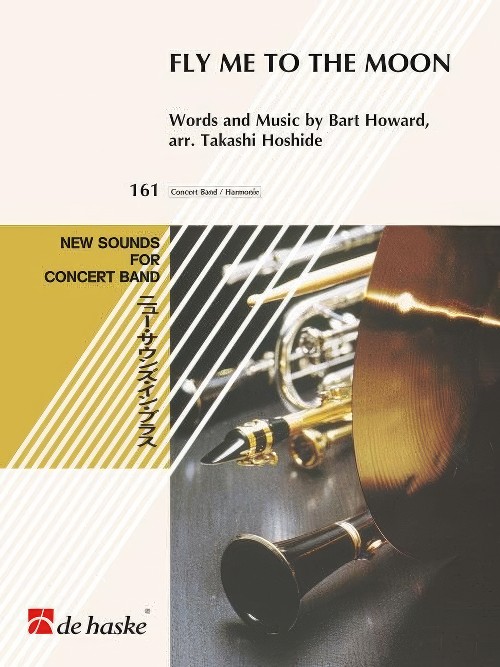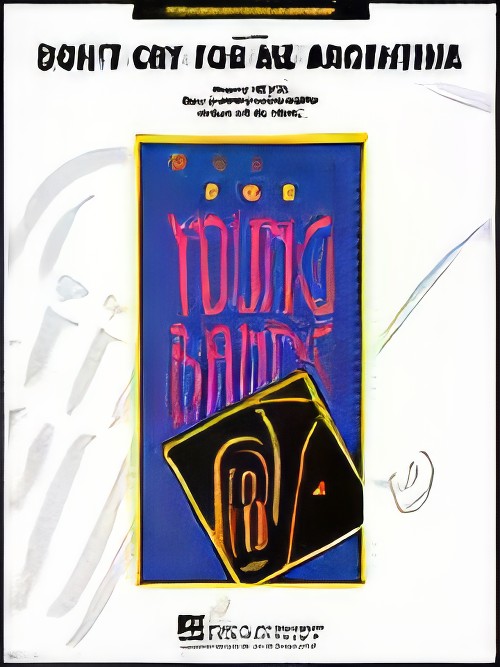Results
-
 £57.50
£57.50YOU'VE GOT A FRIEND IN ME (Young Band) - Newman, Randy - Higgins, John
This item may be Print on Demand (approx 3 weeks). This catchy hit from the first Toy Story movie plays an even bigger role in Toy Story 2. John Higgins' version is cleverly arranged and gives your band a light-hearted change of pace.
Estimated dispatch 7-14 working days
-
 £72.99
£72.99Selections from The Greatest Showman - Benj Pasek
From the powerful soundtrack of the hit movie The Greatest Showman, here is a dramatic and exciting medley for the concert stage. Includes: The Greatest Showman, Never Enough, a Million Dreams, This Is Me and From Now On.
Estimated dispatch 7-14 working days
-
£54.99
I Hear You Calling Me - Marshall
Bb Cornet or Vocal SoloThis publication is a reprint of a manuscript arrangement. Please view the music sample included on this page to ensure your satisfaction with the legibility of the manuscript parts.The arranger's musical judgment has governed the instrumentation employed. Please note the instrumentation page on the attached music sample.If you have any questions prior to placing your order, please contact us at [email protected].
Estimated dispatch 7-14 working days
-
£65.99
Believe Me If All Those Endearing Young Charms - Thomas Moore
This publication is a reprint of a manuscript arrangement prepared for The Detroit Concert Band. Please view the music sample included on this page to ensure your satisfaction with the legibility of the manuscript parts.The arranger's musical judgment has governed the instrumentation employed. Please note the instrumentation page on the attached music sample.If you have any questions prior to placing your order, please contact us at [email protected].
Estimated dispatch 7-14 working days
-
 £89.99
£89.99I've Got The Music In Me - Bias Boshel
Kiki Dee turned this hit into an immortal song, which is still very popular today. In particular it is well known locally as the closing tune of the programme "De Notenclub".
Estimated dispatch 7-14 working days
-
 £57.50
£57.50Do nothin' till you hear from me
Smooth and sophisticated, this jazz classic from the master of swing, Duke Ellington, is wonderfully adapted for concert band by John Moss. Your audiences are sure to enjoy the marvelous sounds of this elegant arrangement. Includes written solo for alto saxophone.
Estimated dispatch 7-14 working days
-
 £65.00
£65.00Me and My Broken Heart (Concert Band - Score and Parts) - Lopez, Victor
Rixton is a name you should know by now, if not, you'll definitely recognise their No.1 single, a really catchy mid-tempo pop song with a melody that's soulful and effusive. With a couple of solo opportunities in the introduction and its laid-back groove, this one will be a hit on your very next concert! Duration: 4.45
Estimated dispatch 7-14 working days
-
 £104.99
£104.99Fly Me to the Moon (Concert Band - Score and Parts) - Howard, Bart - Hoshide, Takashi
This famous evergreen, performed by Frank Sinatra and many others, is now arranged with lovely solos for trumpet and flute. After an 'authentic'opening, Bart Howard allows the arrangement to glide into a bossa nova.Duration: 5:15
Estimated dispatch 7-14 working days
-
 £58.50
£58.50Give Me Your Tired, Your Poor (Concert Band with Choir - Score and Parts) - Wagner, Douglas E.
The immigrant spirit of our Nation lives on in the hearts of all Americans through the words of Emma Lazarus that appear at the base of the Statue of Liberty. Doug Wagner has created this wonderful work for concert band with strings and chorus. It is perfect for any event and allows participation of the entire music department! Duration: 3.30
Estimated dispatch 7-14 working days
-
 £57.50
£57.50DON'T CRY FOR ME ARGENTINA (Young Band) - Lloyd Webber, Andrew - Sweeney, Michael
From Andrew Lloyd Webber's powerful opera Evita, here is a marvelous setting of the well-known main song. Written in moderately slow Latin style, this arrangement contains dramatic emotional peaks and a variety of scoring techniques.
Estimated dispatch 7-14 working days
